Make the perfect pumpkin pie for Thanksgiving—here's how
This is how you win a bake-off.
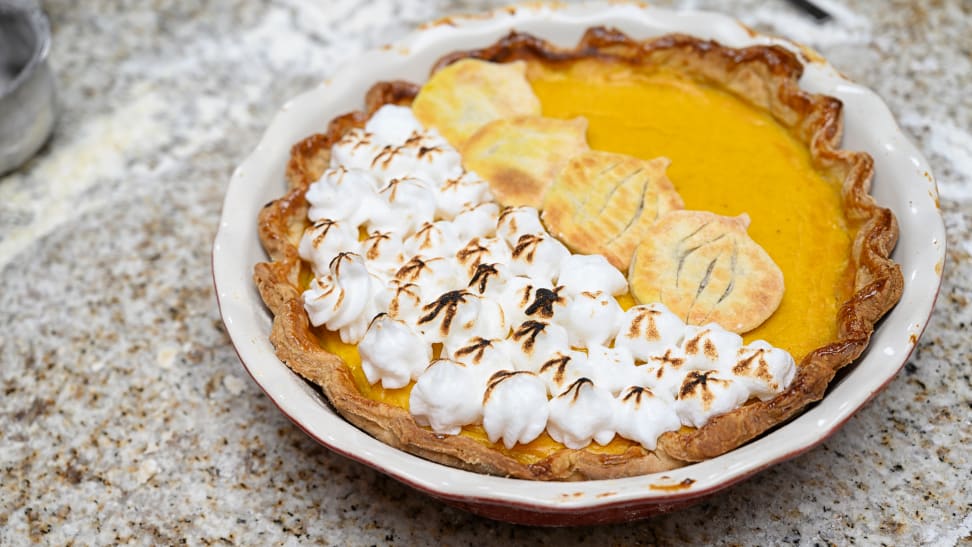 Credit:
Reviewed / Betsey Goldwasser
Credit:
Reviewed / Betsey Goldwasser
Products are chosen independently by our editors. Purchases made through our links may earn us a commission.
It’s the time of year when you can’t leave your house without seeing pumpkin everything—from the decorations on doorsteps to pumpkin spice beers and lattes, that damn gourd is unavoidable. But as the holiday cooking season approaches, we can’t help but get excited about the original pumpkin product—pumpkin pie.
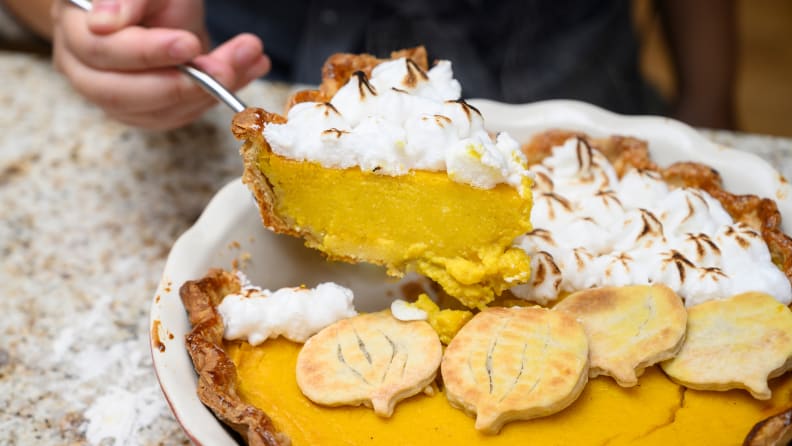
It's time to get excited about pumpkin pies.
Although the center of attention with most pies is the filling, a flaky, buttery homemade pie crust is the true unsung hero of a good pumpkin pie.
When I was new to baking, I was desperately looking for a pie crust recipe that guaranteed a uniform result every time I baked. However, after a few failed attempts, I realized the recipe itself wasn’t going to give me much help in terms of the technique, known as “cutting-in,” which is dependent on the temperature of the surrounding environment and the warmth of my fingertips.
While a good food processor can quickly dice chunks of butter into small bits and transform the flour and butter mix into little crumbles, it can also over-mix your ingredients, which results in a crumbly pie crust.
That's why I was thrilled to discover the power of pastry blenders. These comparatively small tools can easily mix your dough at a fraction of the price of a food processor—and give you the best pie crust you've ever made.
What is a pastry blender?
A pastry blender is a hand-held tool that cuts solid butter into pieces and incorporates flour into the butter bits to form coarse crumbs. It is normally composed of metal strips or metal wires connected to a handle.
Pastry blenders reduce heat contact while mixing, which prevents butter from melting into the flour mixture and creating a crumbly rather than flaky crust. As the small butter pieces “cut” into the flour, they stay in discernible pieces, which create individual air pockets that later expand under high temperature and result in a layered crust.
The flakiness of a crust heavily depends on the size of the butter pieces and generally, larger pieces give larger flakes. Food processors tend to cut butter into pieces that are too small, which sometimes leads to a not-so-flaky crust. That's why pastry blenders are a key tool in this recipe.
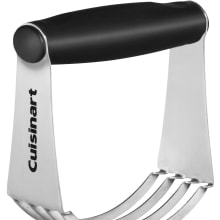
This tool is our secret trick to perfect homemade pastry dough
How to use a pastry blender
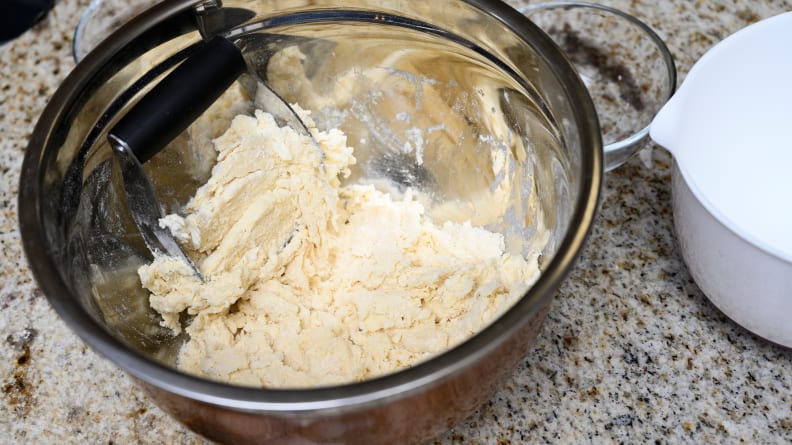
Keep mixing the butter and flour until small crumbs start to appear.
To use a pastry blender, simply press it down on the butter and flour mixture in a bowl and repeat the motion until the mixture resembles small peas. Then, add in your egg yolks and ice-cold water and press to combine.
If the mixture becomes too crumbly to work with, add ice water one tablespoon at a time to work the mixture into a cohesive dough. With floured hands, shape the pie dough into a 5-inch-wide disc. Wrap the dough and refrigerate it for at least two hours before use.
Tips for the best pumpkin pie
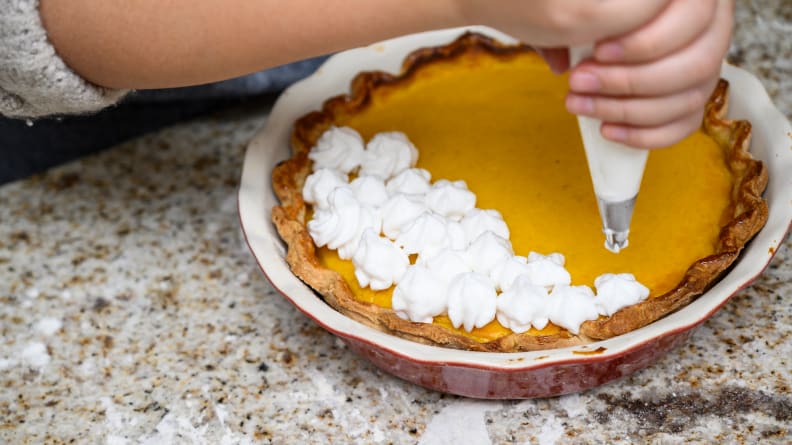
We have a few tips and tricks to up your pie game.
Beyond dough flakiness, there are a lot of factors that determine how your your pumpkin pie is going to turn out. To bake the best pie possible, here are some things to keep in mind:
Use a good pie dish
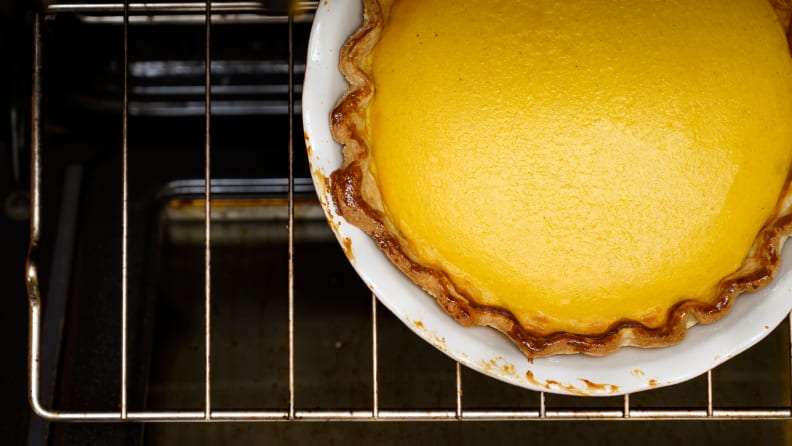
This Emile Henry Modern Classic pie dish is our favorite.
Not every pie is created equal, and neither is every pie dish. I personally prefer using ceramic dishes to create an evenly browned crust, but metal dishes are more affordable and can work just as well, so long as they're not disposable.
The stylish and well-constructed Emile Henry Modern Classics dish took first place in our roundup of the best pie dishes.
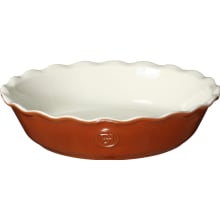
This stylish and functional pie dish is the best we've tested.
Use the right ingredients
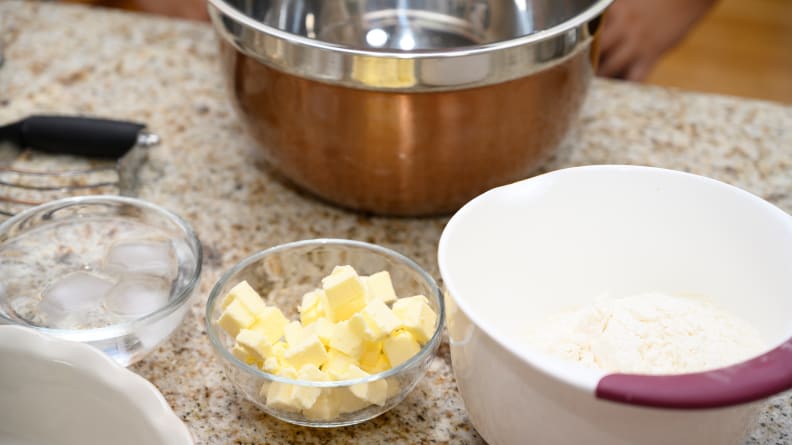
Use good butter to make the pie crust.
If you want to achieve a really flaky pie crust, use lard instead of butter—it will help "shorten" gluten strands in your dough.
If you must use butter, make sure to purchase quality butter with a high fat content, like Kerrygold. Don’t let the fat scare you—as the pie crust is only a small portion of the pie, you won’t be getting that much fat in individual pieces. And besides, pie should be rich!
Blind bake the crust
Though we’re often in a hurry while we bake, it’s important to blind bake the crust before adding the filling to prevent crust sogginess. To blind bake, line the pie dough with parchment paper and then add pie weights or dried beans.
Depending on the filling of the pie, blind bake time varies, as pies with cooked fillings will require longer blind bake times than those with uncooked fillings.
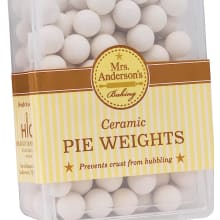
Pie weights make it easy to achieve the optimal crust texture
Make the filling from scratch
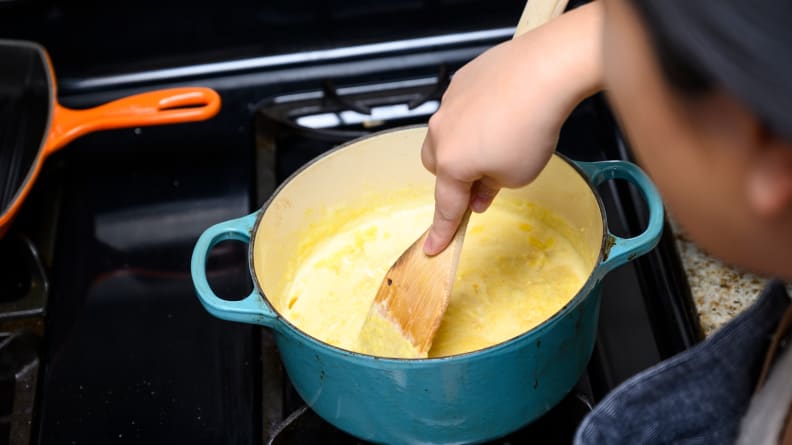
Instead of using canned pumpkin, we made the filling from scratch.
To add a personal touch to my pumpkin pie, I always prefer to make the purée myself as opposed to buying the canned pumpkin from the store. Although it sounds intimidating, the actual process of puréeing isn’t too difficult.
With some help from a blending tool (either an immersion blender or a pro blender), the purée can be ready in a few minutes—and it’s smooth like silk with no lumps. Overall, freshly made pumpkin purée simply tastes better than its canned counterpart—it’s heavier and has a richer flavor.
Be creative with toppings
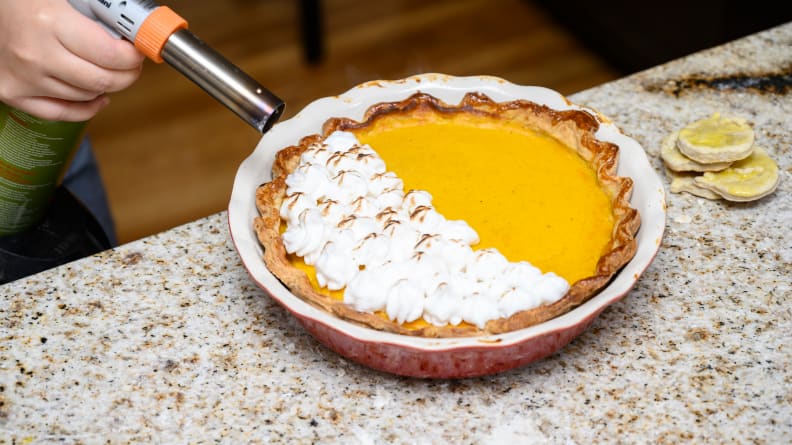
Be creative with your pies using a butane torch (safety first, though).
While pumpkin pie is most traditionally served with a scoop of vanilla ice cream or dollop of whipped cream, I like to do something different by topping it with scorched meringue.
You can cook meringue by putting it in the broiler for a burnt look, but since I discovered the blow torch method, I’ve never returned to my broiler. Why? Using a blow torch may seem scary at first, but it is actually easy to use and gives me more creative control over how I want my pie to look. Patience is the key.
At home, we use our butane blow torch for a variety of kitchen tasks including scorching croutons in French onion soup and searing salmon steaks.
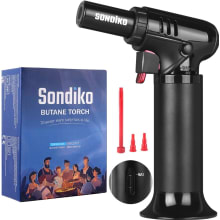
Get creative with this highly rated kitchen torch.
As the harvest season nears, it’s the best time of the year to practice your pie-making skills and impress your friends and family with a gourmet take on a classic. Enjoy baking!


